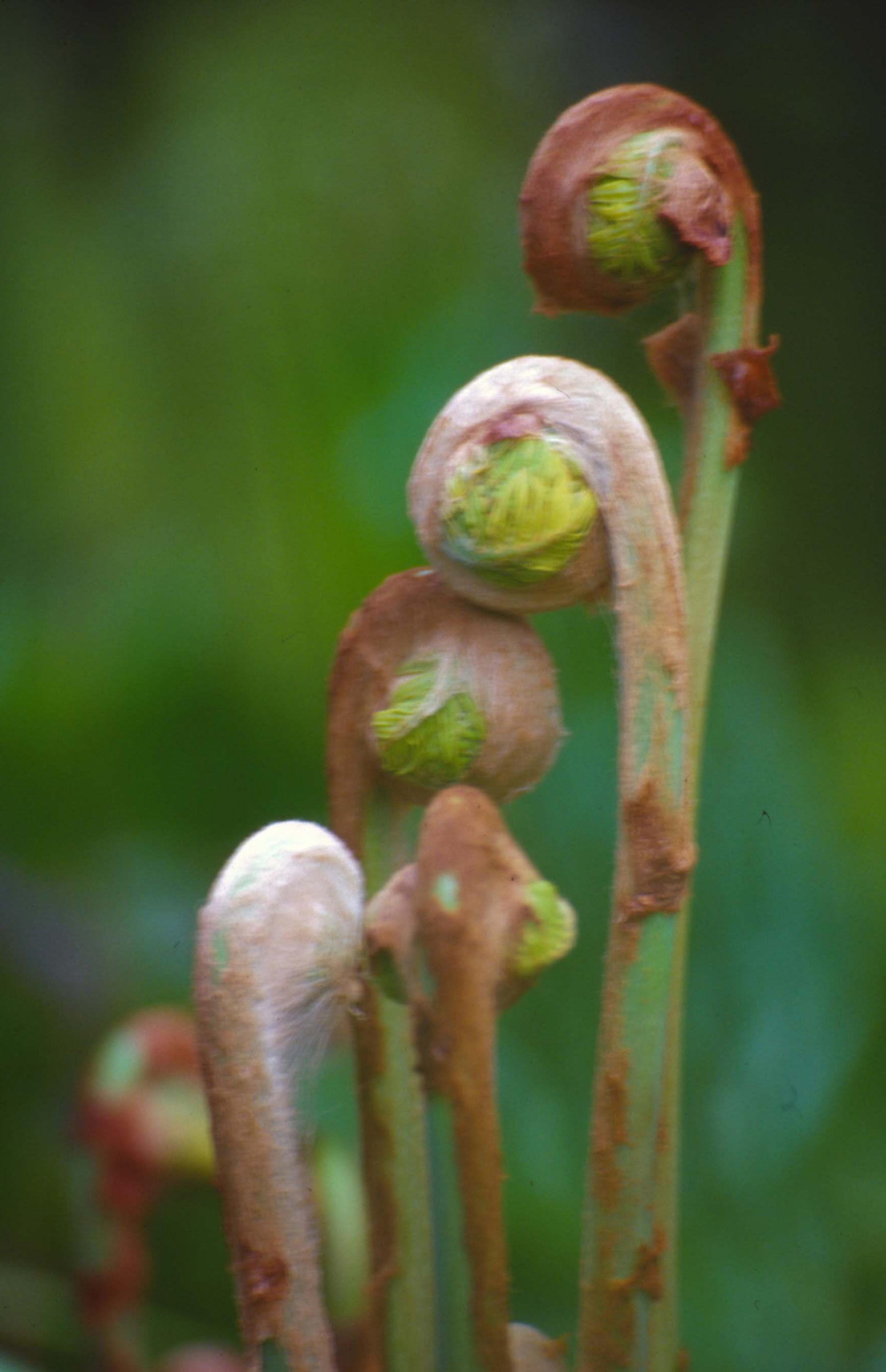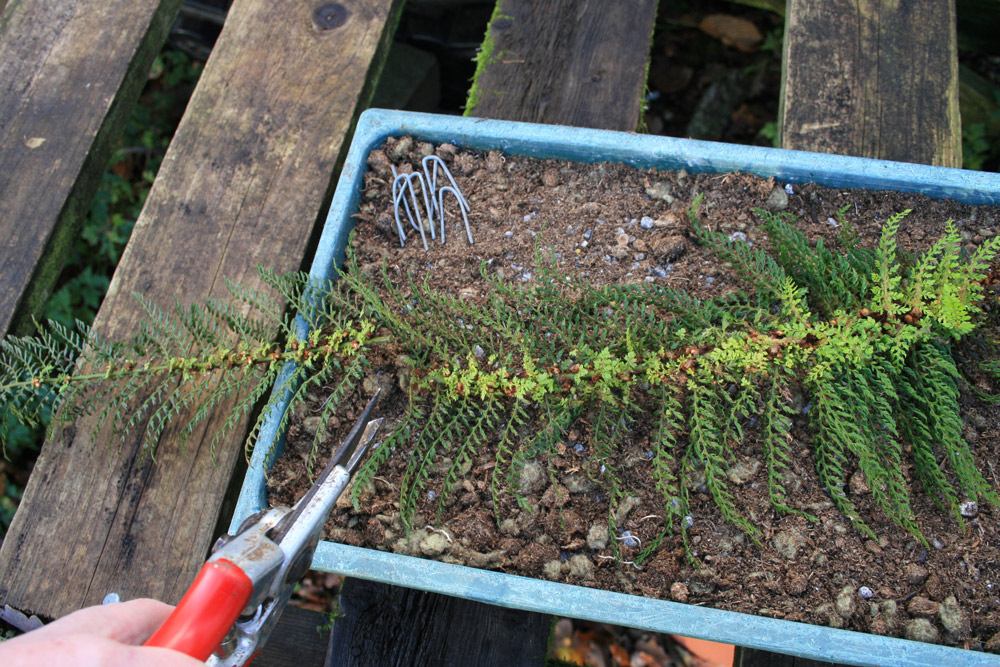By Sally Gregson.
In winter gardeners tend to rely on evergreens and the occasional spark of flower to give their gardens interest and pizazz.
And those evergreens do tend to be quite dark-leaved. Hollies, ivies, laurels all seem to have shining, deep green leaves. It’s the fresh green that is often missing.
Hardy, ‘evergreen’ ferns are mostly just that – light, refreshing, spring green. They survive the harshest of winters tucked up in the shade of shrubs and roses, out of the sun’s cold glare, clothing the bare legs of deciduous shrubs and roses with lacy green petticoats.
Our native Hart’s Tongue ferns are ideal for popping in difficult, dry, shady spots. And there are lots of variations with interesting leaves. Some are bifurcated, that is their tips are divided; some have serrated edges to their fronds; while in others the whole leaf margin undulates.

A planting of these Adiantum scolopendrium ‘Undulatum’ covering the ground beneath winter-flowering shrubs, such as Viburnum x bodnantense ‘Dawn’, for example, looks like a stormy coastline with rough green waves.
Then there are the dozens of varieties of Polystichum with its upright, laddered fronds. Some, such as P. setiferum ‘Divisilobum’ grows to about 60cm and, like the Hart’s Tongues, is tolerant of dry shade.
But P. setiferum has a useful trick up its frond – it makes little fernlets all along the leaf at each axil. In December and January it is possible to cut off a frond displaying the fernlets, and pin it down on a tray of cuttings compost – 50:50 compost and grit – to make more of itself. The fernlets should have rooted, or not, by the spring, when each can be given a separate pot and grown on until big enough to plant out the following year.
At the end of the winter, as spring starts to prompt new growth everywhere, the ‘evergreen’ ferns take a month off. Their over-wintered foliage goes brown and dies back before their new croziers start to unfurl. A wise gardener will cut back the tired old leaves at this stage, to allow the young growth room to expand. And then the croziers will magically unfurl into fronds, to start another year in a shady part of your garden.











Leave a Reply